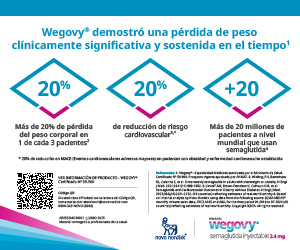Importance of women's health in Latin America (Chile)
Keywords:
health, diabetes, women, ChileAbstract
Type 2 diabetes mellitus (T2DM) constitutes a significant public health problem worldwide. Chile is no exception, with a prevalence reaching 12.3% of the adult population and exceeding 30% in people over 65 years old, the highest rate in South America1. This prevalence is slightly lower in women than in men at middle ages but higher in older ages, primarily due to higher life expectancy. According to the latest National Health Survey in Chile2, 14% of women versus 10.6% of men have diabetes.
A very concerning aspect is that this increase in prevalence affects women of childbearing age, where it has risen 47 times over the last two decades. This could lead to an increase in congenital malformations and an even greater rise in the incidence of diabetes in the coming decades3. On the other hand, mortality due to diabetes has seen a slight decrease between 1990 and 2020 at the expense of women, as it has increased in men. For women, the leading cause of death is tumors, followed by stroke and acute myocardial infarction, with diabetes in sixth place4.
The costs associated with diabetic complications due to non-compliance with blood glucose control goals and other cardiovascular risk factors increase exponentially. Women with diabetes have a higher number of some comorbidities such as obesity and chronic kidney disease, while men have more cardiovascular disease and amputations5,6.
For years, Chile has had a National Strategy to improve the control of Diabetes and Cardiovascular Risk Factors (CVRF), implemented through the Cardiovascular Health Program. Along with the Explicit Health Guarantees system (GES), this program ensures diagnosis and treatment throughout the country for people with hypertension and diabetes, regulated by national clinical guidelines and corresponding laws. Fortunately, between 2010 and 2020, there was an increase in patients achieving metabolic compensation goals (from 39% to 45%), but post-pandemic, these rates dropped to 28% and 35% in 2019 and 20207.
Current challenges include regaining control targets and hopefully achieving gender-specific strategies to address persistent issues more effectively.
References
I. Atlas IDF 2021, 10º Edición.
II. ENS 2016-2017
III. Olmos P. Continuo ascenso de la prevalencia de diabetes mellitus en mujeres chilenas en edad fértil: proyección 2020-2039 de malformaciones congénitas por diabetes pregestacional. Rev Med Chile 2020;48(8).
IV. Estadísticas Demográficas INE
V. Mata-Cases M, et al. Prevalence and coprevalence of chronic comorbid conditions in patients with type 2 diabetes in Catalonia: a population-based cross-sectional study. BMJ Open. 2019 Oct 28;9(10):e031281.
Downloads
Published
Issue
Section
License
Copyright (c) 2024 on behalf of the authors. Reproduction rights: Argentine Society of Diabetes

This work is licensed under a Creative Commons Attribution-NonCommercial-NoDerivatives 4.0 International License.
Dirección Nacional de Derecho de Autor, Exp. N° 5.333.129. Instituto Nacional de la Propiedad Industrial, Marca «Revista de la Sociedad Argentina de Diabetes - Asociación Civil» N° de concesión 2.605.405 y N° de disposición 1.404/13.
La Revista de la SAD está licenciada bajo Licencia Creative Commons Atribución – No Comercial – Sin Obra Derivada 4.0 Internacional.
Por otra parte, la Revista SAD permite que los autores mantengan los derechos de autor sin restricciones.




























